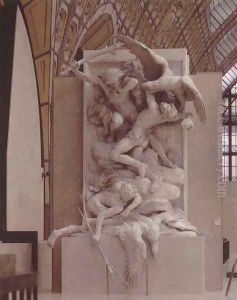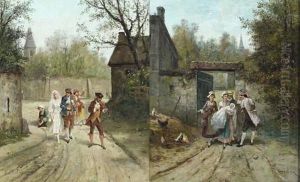Jules Felix Coutan Paintings
Jules Félix Coutan was a prominent French sculptor, born on September 22, 1848, in Paris, France. He was celebrated for his ability to blend classical traditions with the emerging styles of his time, notably during the Belle Époque. Coutan's education in the arts was comprehensive and prestigious, having studied under renowned figures like Pierre-Jules Cavelier at the École des Beaux-Arts in Paris. His talent was recognized early on, earning him the esteemed Prix de Rome in 1872, which allowed him to study at the Villa Medici in Rome, an opportunity that profoundly influenced his artistic development.
Coutan's career was marked by numerous high-profile commissions and contributions to public monuments, a testament to his skill and reputation as a leading sculptor of his era. Among his most famous works is the elaborate sculptural group 'La Renommée des Arts' for the façade of the Palais Garnier in Paris. However, his masterpiece is arguably the grandiose 'Commerce, Industry and Agriculture' sculpture at the Grand Central Terminal in New York City, unveiled in 1914. This monumental work exemplifies Coutan's ability to convey motion and emotion, combining allegorical figures in a dynamic composition that captures the spirit of progress and innovation characteristic of the early 20th century.
Throughout his career, Coutan was involved in various significant projects and was a respected member of the French artistic community. He was awarded the Legion of Honour, France's highest order of merit, for his contributions to the arts. Additionally, Coutan played a crucial role in education, serving as a professor at the École des Beaux-Arts, where he influenced a generation of artists.
Jules Félix Coutan passed away on February 23, 1939. His legacy is preserved not only in his monumental public works but also in his influence on the sculptural art form, seamlessly integrating classical ideals with modern expressions. Coutan's works remain a testament to his mastery of sculpture and his significant impact on the visual landscape of both France and the United States.

